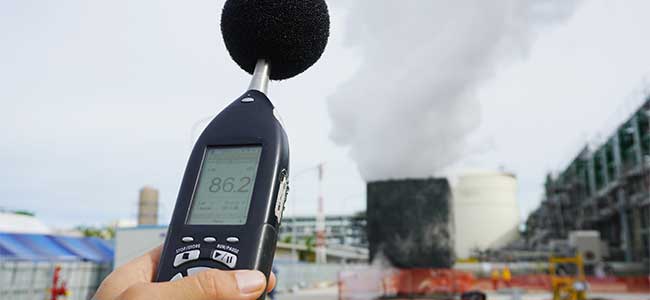
Noise Monitoring: A Sound Strategy
Effective noise monitoring and control measures in the workplace are crucial to preventing noise-induced hearing loss and ensuring employee safety.
- By Tim Turney
- Sep 10, 2024
The world is getting louder. People cannot escape noise pollution in their everyday lives whether from traffic, infrastructure, music or more, but employees can and must be protected from excessive noise in the workplace. Exposure to loud noise kills the nerve endings in ears.
When compounded over a long time, this can result in noise-induced hearing loss (NIHL), a permanent occupational illness that blights at least 10 million people in the U.S., according to the National Institute on Deafness and Other Communication Disorders.
Those with affected hearing are more likely to develop dementia, suffer from social isolation, have weakened processing abilities and are at a higher risk of physical injury due to a lack of awareness of immediate hazards.
Under OSHA’s Noise Standard, the employer must reduce noise exposure through engineering controls, administrative controls or Hearing Protection Devices (HPDs) to attenuate the occupational noise received by the employee’s ears to within specified levels.
Terminology
Employees that are subjected to loud, instantaneous noise can suffer from immediate noise induced hearing loss that cannot be repaired. Similarly, lower levels of noise over the course of a working life can also cause similar damage, but due to the lengthy period of time this takes, this can often be ignored.
Workplace noise terminology can be difficult to understand for those that are not trained, as employers will often work with consultants or other experts to ensure compliance. It is just as important for employees to understand how noise is measured and the respective limits placed on noise levels to protect employees in the workplace. To improve employee engagement and awareness in understanding the risks of occupational deafness and other hearing related diseases, a better understanding of this terminology is the best place to start.
Sound is measured in decibels (dB), a logarithmic scale. With NIOSH standards, this means that every three-decibel increase equates to double the amount of sound energy. This doubling of noise energy also equates to a doubling of the risk of hearing damage, making relatively small increases in deciBels have a significant effect on employee health. Sound values will have a dBA unit attached to them, the ‘A’ refers to A-weighted sound levels which closely match the perception of loudness by the human ear.
This article originally appeared in the September 2024 issue of Occupational Health & Safety.